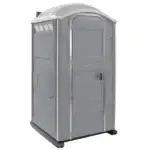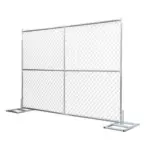When it comes to managing large-scale projects, whether it’s construction, public events, or even temporary access control, the question of do I need temporary fencing often arises. Unlike permanent fencing solutions that are designed for long-term use, temporary fences offer flexibility, security, and safety for short-term requirements. They are often seen at construction sites, music festivals, sporting events, and even on film sets, serving a critical role in keeping people safe, organizing spaces, and maintaining order.
1. Security and Protection for Construction Sites
One of the most common uses of temporary fencing is around construction sites. Building projects, whether residential, commercial, or industrial, are often full of valuable equipment, materials, and machinery that need to be protected from theft or vandalism. A construction site can be a prime target for individuals looking to steal expensive tools, equipment, or even construction materials.
Temporary fence rentals, typically made of sturdy materials like chain-link or mesh, create a physical barrier around the site, limiting access to authorized personnel only. By securing the perimeter with fencing, you significantly reduce the likelihood of unauthorized entry, helping protect both your assets and workers.
Moreover, temporary fencing can also be used to designate the site from neighboring properties, ensuring that contractors have clear boundaries, minimizing any accidental damage to adjacent land or buildings.
2. Enhancing Safety for Workers and the Public
Safety is a top priority at any job site, especially when working with heavy machinery, power tools, or hazardous materials. Temporary fencing is essential for preventing accidents and injuries by keeping the public and unauthorized personnel away from dangerous areas.
At construction sites, fences help cordon off areas where dangerous activities are taking place, such as demolition zones, excavation areas, or scaffolding. This ensures that only those who are qualified and have the proper safety gear can enter.
For public events, temporary fencing plays a similar role. It can be used to create designated paths, direct crowds, or keep attendees away from high-risk areas like backstage, vendor zones, or areas with equipment. This helps avoid overcrowding in critical areas and ensures that everyone stays safe throughout the event.
3. Crowd Control at Events
Temporary fencing plays a key role in crowd management at events, particularly large festivals, concerts, and sporting events. Managing large crowds can be challenging, and crowd control is critical to prevent chaos and ensure a smooth, safe experience for everyone involved.
Fencing allows organizers to:
- Direct traffic flow: By creating clear entry and exit points, temporary fences help guide the movement of attendees, making it easier to manage large crowds. For example, fencing can direct people toward ticket booths, food and beverage stands, or emergency exits.
- Protect restricted areas: Whether it’s VIP zones, backstage areas, or secure zones like performer green rooms or media areas, temporary fencing ensures that only authorized personnel can access these areas.
- Prevent overcrowding: At popular events like concerts or festivals, temporary fences can be used to create barriers that prevent guests from entering areas that are at capacity, reducing the risk of dangerous stampedes or crowding.
Temporary fences also allow organizers to create separate spaces within an event for different functions, such as vendor areas, resting zones, or emergency medical tents, all while keeping them safe and organized.
4. Flexibility and Ease of Setup
One of the biggest advantages of rental temporary fencing is its flexibility. Unlike permanent fences that require excavation and long-term installation, temporary fencing can be set up and dismantled quickly and easily, making it the perfect solution for short-term needs.
Temporary fences are modular, which means they can be adjusted to fit the size and shape of any area. This is especially useful for event organizers or construction managers who may need to change the layout of the space depending on the project’s progression or the event’s unique requirements.
For instance:
- If you’re organizing a concert in an open field, you can quickly configure the fencing to create entrance and exit points, VIP zones, or restricted areas.
- In construction, fencing can be adjusted to accommodate site changes as the project moves forward, such as creating new perimeters as buildings are demolished or new areas are excavated.
The lightweight, portable nature of temporary fencing makes it a convenient solution for any site that needs fast, effective barriers.
5. Cost-Effective Solution
When compared to permanent fencing solutions, temporary fencing rentals are often much more cost-effective. Installing permanent fences can be an expensive and time-consuming process, especially in remote or large areas. For temporary projects or events, investing in long-term fencing might not be necessary. Temporary fences allow you to get the same level of security, safety, and organization without the hefty price tag.
Additionally, temporary fencing doesn’t require a lot of maintenance or upkeep, making it an even more economical option. It’s durable enough to withstand outdoor conditions, yet it doesn’t involve the long-term commitment of a permanent installation, which could incur higher costs for materials, labor, and maintenance.
6. Environmental Protection and Site Preservation
Temporary fencing can also play an important role in environmental protection. On construction sites, for example, fences can prevent runoff and debris from spilling over into neighboring areas, protecting natural habitats, waterways, or public spaces.
At agricultural sites or nature reserves, temporary fences are used to prevent overgrazing, keep wildlife out of certain areas, or protect crops from being trampled by pedestrians or animals. In these cases, fencing preserves both the integrity of the land and the environment while providing a clear demarcation of where public access is allowed.
In certain industrial or sensitive areas, temporary fencing can also help to contain any accidental spills or contamination, ensuring that harmful substances don’t escape the site and affect surrounding communities or ecosystems.
7. Aesthetic and Branding Opportunities
While the primary function of temporary fencing is to provide security and safety, it can also serve as an aesthetic tool and a branding opportunity. Event organizers and businesses can use custom-designed fencing to enhance the visual appeal of their site or promote their brand.
For example:
- At festivals or trade shows, custom banners can be attached to the fencing to showcase sponsor logos, event branding, or important information. This turns the fence into a marketing tool that adds value to the event’s appearance.
- For commercial properties, temporary fencing can be used to secure a construction or renovation area without detracting from the overall curb appeal of the site.
- For film sets or photo shoots, temporary fencing can define specific areas, while also being used to manage production logistics or hide unwanted visual distractions.
Conclusion: Temporary Fencing—An Essential and Versatile Solution
Whether you’re managing a construction project, organizing a large public event, or safeguarding an agricultural site, temporary fencing provides a flexible, cost-effective, and essential solution for a wide range of needs. From security and safety to crowd control and environmental protection, temporary fencing is an invaluable tool that helps keep your site organized, secure, and functioning smoothly.
The beauty of temporary fencing lies in its versatility. It can be adapted to nearly any environment and quickly set up and taken down, making it ideal for short-term projects. With so many practical benefits, it’s clear that temporary fencing is far more than just a barrier—it’s a strategic asset for anyone managing a site.







